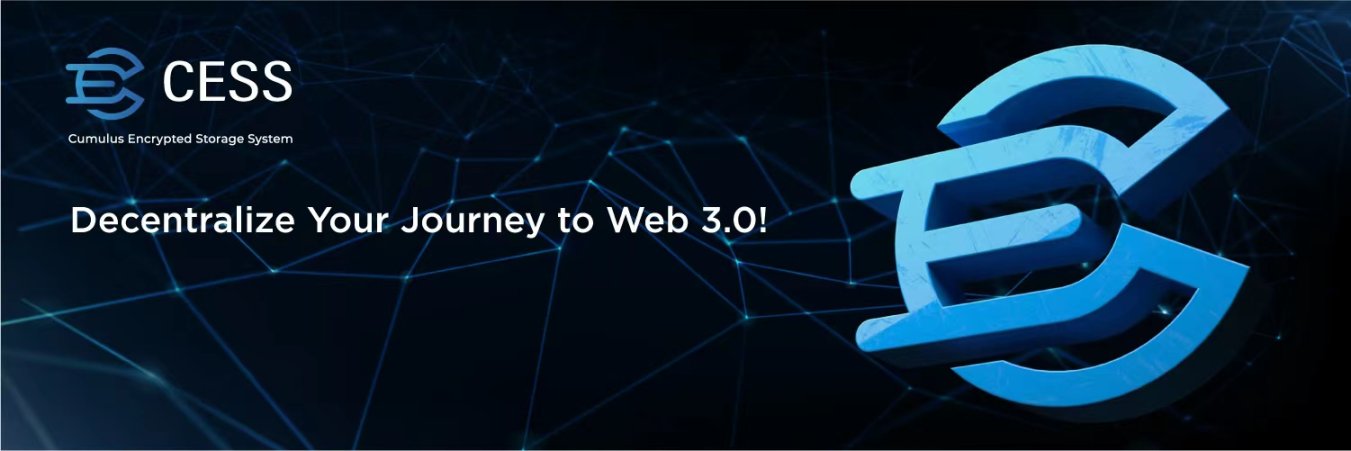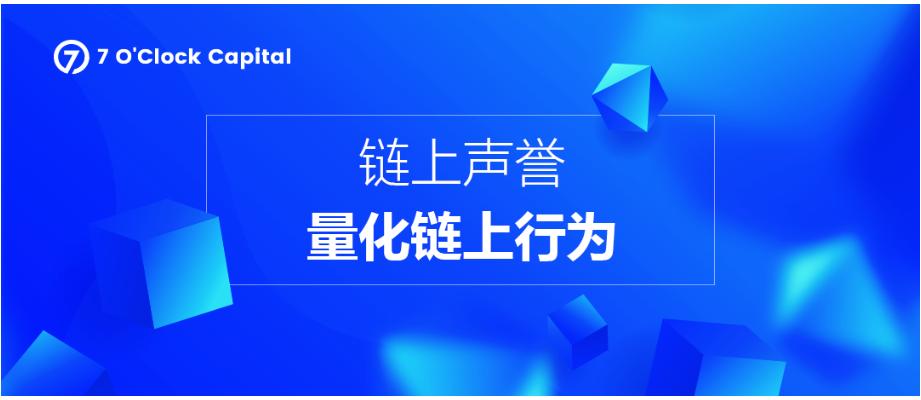What industry pain points does the decentralized storage "new star" CESS address?
Author: 7 O'Clock Capital
Since the frenzy of Filecoin in mid-2021 and Arweave in the second half of the year, the decentralized storage industry has entered a cooling period, with a stark contrast between the vast reserves of storage resources and sporadic practical applications. Less than 1% of the EB-level storage resources on the Filecoin network have been effectively utilized. The overly high expectations for the future and the stark reality may be the main reasons for the decline in enthusiasm.
However, the lessons learned from the past have become a guide for the future. In 2022, we once again witnessed the emergence of new players in the infrastructure track. The CESS (Cumulus Encrypted Storage System), developed based on the Substrate framework, is one of them. Overall, CESS has successfully "taken the essence and discarded the dross" from its predecessors, integrating multiple industry-leading technologies and mechanism designs, while also introducing innovative storage mechanisms that are worth paying attention to.

Project Introduction
Cumulus Encrypted Storage System (CESS) aims to become the first decentralized cloud storage for enterprise-level commercial applications. It is a high-speed, secure, and scalable decentralized cloud storage network developed based on the Substrate open-source framework, consisting of four layers: blockchain, storage network, content distribution network, and application layer. CESS employs a random selection rotating consensus node mechanism (R²S) to coordinate network resources and load, and ensures data integrity, security, traceability, and privacy through multi-replica recoverable storage proofs (PoDR²), multi-type data rights confirmation (MDRC), and decentralized proxy re-encryption mechanisms. Additionally, CESS will support WASM and be compatible with EVM smart contracts to build a secure and efficient decentralized storage network for Web3 and large commercial applications.
The blockchain developed by CESS adopts an innovative random selection rotating consensus node mechanism (R²S). This mechanism features the random selection of qualified nodes to become consensus nodes responsible for block production and other tasks for a certain period, after which a new random selection occurs. In addition to the randomness of selection, CESS also implements a reputation scoring mechanism for nodes. If a node fails to complete its designated tasks or engages in malicious activities, it will be stripped of its rotating node qualifications.
CESS's storage model is neither a peer-to-peer order model like Filecoin nor an unlimited backup model like Arweave. Instead, consensus nodes are responsible for preprocessing the data that needs to be stored through encryption, sharding, redundancy, etc., and then randomly allocating it to qualified storage miners. Storage miners only need to ensure the security of the stored data and remain online long-term, without needing to perform additional work.

In addition to the two layers of networks mentioned above, CESS has also designed a data distribution network composed of caching miners and retrieval miners, responsible for quickly responding to user demands for data and locating it, as well as caching some popular data to improve network efficiency, somewhat similar to the functions of traditional CDNs.
Industry Pain Points and CESS's Solutions
There are indeed several pain points in decentralized storage protocols, including miner centralization, difficulties in ensuring data privacy, and high data upload costs.

Miner Centralization
The first issue is the excessive power of miners, which is particularly evident in Filecoin. Filecoin's storage miners also perform the tasks of packaging blocks and confirming transactions, while they are also service providers for the network, acting as both players and referees. If this point is not convincing enough, then the activities launched by Filecoin two years ago to increase nominal storage capacity through real data storage, with several large mining companies among the auditing institutions, seem quite exaggerated.
Although Arweave does not face this issue, it still has centralization risks, primarily due to the fact that only large miners can bear the burden when the overall network storage capacity is large, leading to centralization. Additionally, miners tend to store only data that generates revenue for themselves, neglecting historical transaction data and other non-revenue data, resulting in a "miner dilemma" regarding data centralization.
CESS provides solutions to both of these issues. Firstly, CESS separates the functions of packaging blocks and providing storage services, ensuring that storage miners do not have the ability to decide which transactions are packaged within blocks, preventing any single miner from dominating the network. Furthermore, in the CESS network, any data uploaded by users is randomly allocated to storage miners, rather than being chosen by the miners themselves, thus solving the centralization problem and achieving efficient utilization of storage resources. Additionally, the consensus nodes storing block history also address the "miner dilemma."
Overall, CESS's mechanism of randomly allocating all data that needs to be stored maximizes fairness.
Data Privacy Issues
Previously, I saw a comparison between Filecoin and Arweave on Twitter, where the effective data stored on Filecoin has reached the PB level, while Arweave has significantly less. If Filecoin addresses certain privacy issues through zero-knowledge proofs, allowing only storage service providers to view the data, it can be considered to provide some level of privacy. In contrast, data on Arweave is entirely devoid of privacy. Of course, many publicly available pieces of information, such as music and videos, are content that needs to be shared, so the impact may be limited.
However, when the service provider has requirements for data privacy, existing storage networks mostly only allow users to encrypt their data themselves, increasing friction in business operations. CESS encrypts and shards data before it is stored, ensuring data privacy and security. As the default option of the network, CESS inherently provides privacy protection for data, making it possible to support Web2 applications. In fact, not all data in Web2 applications has high requirements for interaction efficiency, but the demand for privacy is very real, especially when it involves trade secrets. CESS may provide the possibility for blockchain-based storage to serve Web2 applications.
High Data Upload Costs
The issue of asymmetric upstream and downstream bandwidth is particularly severe in China, where download speeds are sufficient, but upload speeds are often very slow. Achieving equal upstream and downstream speeds can be extremely costly. Therefore, industry insiders have revealed that many domestic Filecoin miners even shut down the data upload (return) channel, preventing data from being downloaded by users to save costs.
CESS alleviates this problem to a large extent by designing a content distribution network composed of retrieval miners and caching miners. On one hand, retrieval miners can quickly locate data and transmit it to users, while caching miners further pre-store popular data, providing users with a more efficient experience.
It is evident that CESS has thoughtfully designed its mechanisms to avoid almost all potential issues that existing decentralized storage projects may encounter. It can be said that CESS has achieved the highest level of efficiency in the most decentralized manner. By ensuring fairness among all parties in the network and allowing each to perform its role, the multi-layer network architecture guarantees that storage can genuinely provide real-time services for applications rather than merely storing cold data. Currently, CESS is in the testing phase, and after the mainnet launch, along with compatibility with EVM, we look forward to a prosperous ecosystem forming around this "new star" in the storage public chain.
Recent Activities of CESS
With the continuous optimization of the testnet and the approaching mainnet launch schedule, CESS will continue the momentum of this summer into the upcoming autumn by launching a year-long "Pioneer Program" that will travel across the global Web3 community.
BlockchainRio
In early September, CESS will participate in an event hosted by BlockchainRio, the largest crypto community in Latin America, where it will introduce CESS and discuss how it will contribute to the development of the Polkadot ecosystem.
Nanjing Sub-venue of Shanghai Blockchain Week
CESS will attend the Nanjing sub-venue event of Shanghai Blockchain Week and showcase the practical use experience of CESS on September 19 during the Web3 Bootcamp Demo Day.
TOKEN 2049
As one of the most important annual conferences in the Web3 industry, this year's TOKEN 2049 conference in Singapore has added a dedicated Polkadot session. CESS will attend this conference to discuss the future development of Polkadot and the important position of decentralized storage represented by CESS within the Polkadot ecosystem.
Vietnamese Offline Meetup
In October, CESS will kick off its Southeast Asia tour, starting with the Vietnamese offline Meetup event.
The Web3 industry in Southeast Asia started relatively late but possesses greater plasticity. CESS may find more users and partners in this emerging market.










